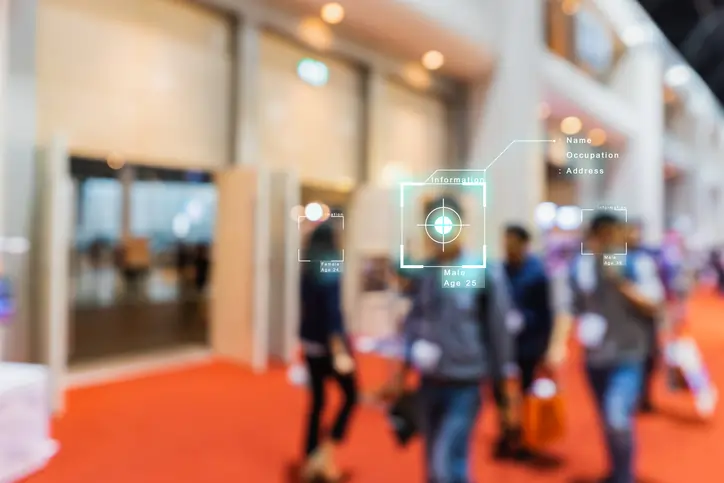
Retail Security: The Latest Trends in Advanced Camera Systems
In an exciting time fiercely dominated by technological advancements, industries galore are undergoing profound transformations, and the retail security sector is no stranger to this period of intense change.
One of the most pivotal components in modern retail security strategies has become use of advanced camera systems; these highly sophisticated systems play a crucial role in safeguarding retail spaces, not only by deterring potential threats, but also by providing valuable insights that inform vastly superior business optimization. Let’s take a look at the latest trends in advanced camera systems that are reshaping the landscape of retail security.
High-Resolution Imaging
One of the notable security trends in advanced camera systems for retail security is the adoption of high-resolution imaging technology. Traditional surveillance cameras tended to produce grainy or otherwise unclear footage, making it challenging to confidently identify individuals or others specific, pivotal details.
Enter the latest cameras, boasting high-definition resolutions that allow for the capture of brilliantly, crisp, clear imagery. These advancements dramatically enhance the ability to recognize faces, license plates, and other critical details, thereby considerably improving overall security.
Artificial Intelligence (AI) Integration
The integration of artificial intelligence has also revolutionized the capabilities of CCTV systems for businesses. AI algorithms can now analyze vast amounts of data in real-time, enabling proactive threat detection and rapid response; these intelligent cameras can even distinguish between normal customer behavior and suspicious activities, reducing false alarms and improving overall efficiency.
Facial Recognition Technology

Facial recognition technology has gained prominence in retail security, offering up a powerful tool for identifying and tracking individuals – very ‘big brother,’ but for the retail industry, it’s a welcome game-changer. Retailers can now use facial recognition systems to identify known shoplifters or other individuals with a history of fraudulent activities; this technology monumentally enhances security measures, alerting staff to the presence of potential threats in real-time and enabling swift intervention. Still, concerns related to privacy and data security have prompted ongoing debates and regulatory discussions surrounding the ethical use of facial recognition in retail environments, so it’s by no means a long-term, guaranteed retail security staple just yet.
360-Degree Coverage
Traditional surveillance cameras often had limited fields of view, leading to frustrating blind spots and vulnerabilities in retail spaces, Impressively, advanced camera systems now offer 360-degree coverage, dramatically minimizing the chances of unauthorized activities going unnoticed; panoramic cameras equipped with fisheye lenses can capture footage from all angles, providing comprehensive surveillance and enhancing overall security.
Smart Analytics and Object Recognition
Modern retail security camera systems can leverage smart analytics and object recognition capabilities to differentiate between various objects and activities. These systems can detect a range of abnormal behaviors, such as loitering or unattended bags, and trigger alerts that call for immediate action; the integration of object recognition technology adds an extra layer of security by identifying potential threats and enabling a proactive response – it’s no longer just up to the security guard to stay awake staring at live footage for hours on end.
Integration with Internet of Things (IoT)
Another noteworthy trend in advanced camera systems is their seamless integration with the Internet of Things (IoT). By connecting cameras up to a network of physical devices, retailers can create a smart, interconnected security ecosystem; for example, when integrated with smart sensors, cameras can detect environmental changes – such as sudden temperature increases or smoke – and trigger immediate alerts. This integration enhances the overall security infrastructure by providing a holistic approach to threat detection beyond human activity.
Cloud-Based Storage and Analysis

When it comes to retail security, the advent of cloud technology has revolutionized the way data is stored and analyzed. Traditional setups often relied on on-premise servers, limiting scalability and accessibility; with cloud-based storage, however, retailers can store vast amounts of high-resolution footage securely, and access it remotely, which infinitely improves the overall security posturing of the venture. Additionally, cloud-based analysis facilitates real-time processing of video data, enabling quicker and more efficient responses to security incidents – the leaps and bounds we have come in security system efficiency would be mind-bending to anyone in retail only a handful of years ago.
Mobile Integration and Remote Monitoring
Another significant trend is the integration of retail security camera systems with mobile devices, enabling remote monitoring for business owners and security personnel. Mobile apps allow users to access live camera feeds, receive real-time alerts, and even control camera movements remotely; this capability provides retailers with the flexibility to monitor their establishments from anywhere in the world (subject to the availability of some decent WiFi), enhancing situational awareness and responsiveness.
Privacy-Centric Design
As concerns over privacy and data security intensify, a trend has emerged in the development of privacy-centric camera systems; these systems now incorporate features such as anonymization and encryption to protect the identity of individuals captured on camera. They are also designed to adhere to stringent regulations on data protection, ensuring that customer privacy remains of central importance, without compromising the effectiveness of security measures.
Future Implications and Considerations
Looking ahead, the trajectory of advanced camera systems in retail security certainly appears poised for continuous innovation. It’s all but inevitable that future developments will include the integration of futuristic augmented reality (AR) for enhanced situational awareness, as well as the use of drones equipped with advanced cameras for impressively dynamic surveillance.


